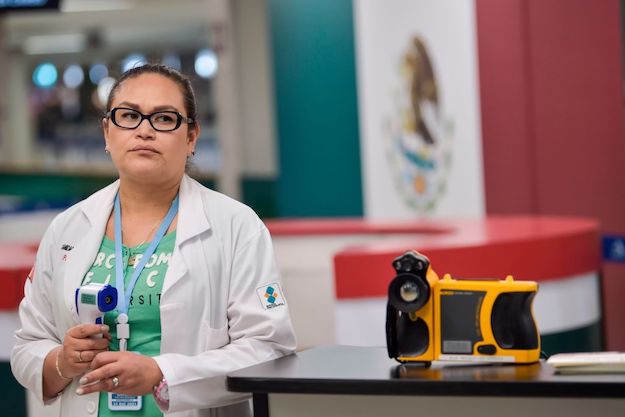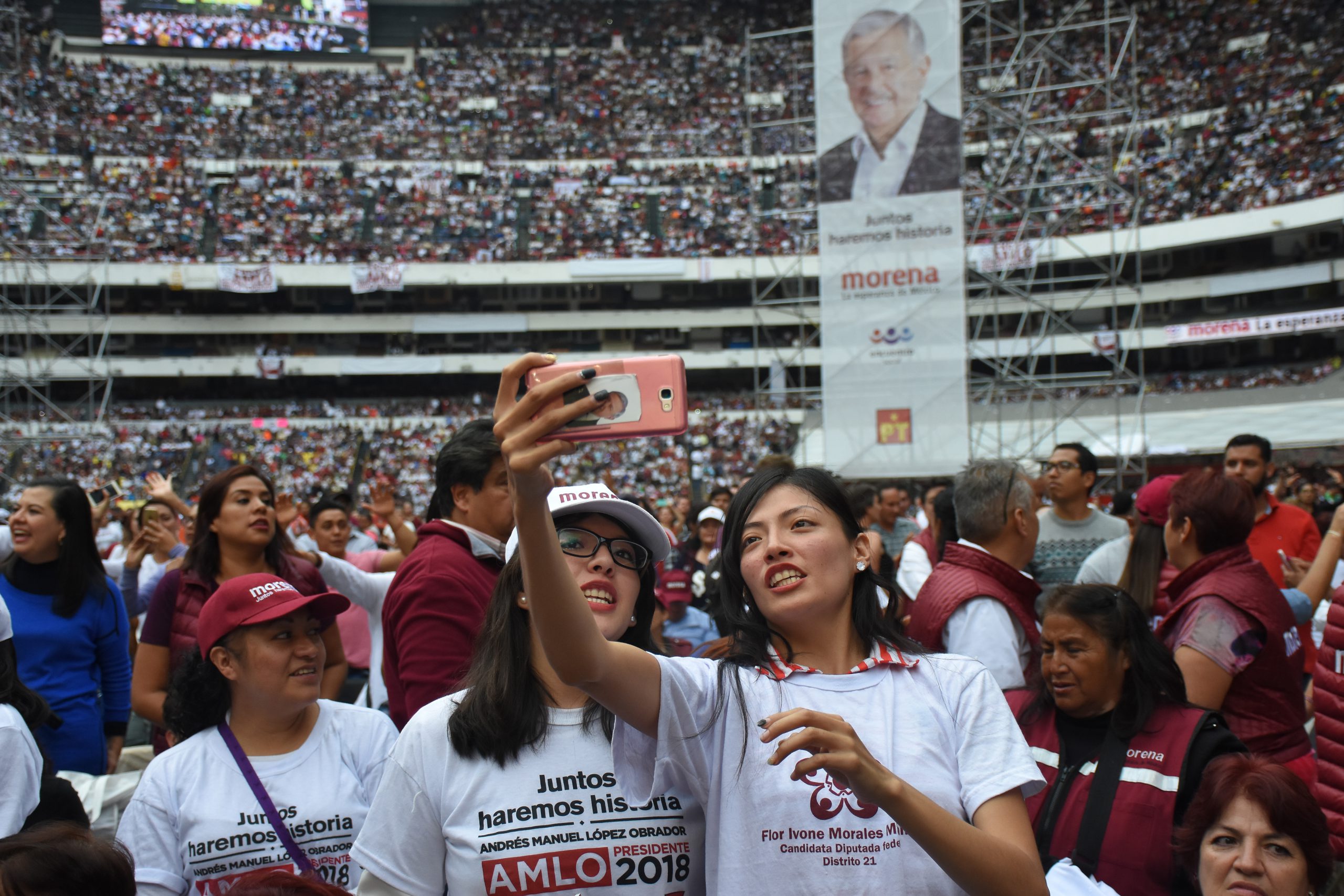The Partido Revolucionario Institucional (Institutional Revolutionary Party—PRI) appears to be returning to Los Pinos 12 years after its historic transition of power to the Partido Acción Nacional (National Action Party—PAN). With more than 80 percent of votes tallied counted since voting began yesterday, PRI presidential candidate Enrique Peña Nieto appears set to receive the presidential sash and take the oath of office at the Chamber of Deputies on December 1, 2012. The election is a victory for the PRI as well as for Mexican democracy.
Six years ago, the Instituto Federal Electoral (Federal Electoral Institute—IFE) was unable to deliver results before midnight as Andrés Manuel López Obrador (AMLO) of the Partido de la Revolución Democrática (Party of the Democratic Revolution—PRD) and Felipe Calderón of the PAN fought for first place. In the end, half a percentage point (243,000 votes) decided the election, providing AMLO supporters with a rallying cry to protest the election and camp on Mexico City´s central Paseo de la Reforma for six weeks. They paralyzed downtown and caused hundreds of small businesses to close for good. For its part, the PRI came in third place and began an internal process to reevaluate its national political strategy.
This year was not a repeat of 2006. IFE President Leonardo Valdés Zurita took to the airwaves shortly before midnight in Mexico City to thank the more than 49 million Mexicans who voted—the highest number in any election to date. IFE´s Quick Count figures revealed a nearly 7 percentage point lead for Peña Nieto, making his victory likely irreversible by the time that all acts are counted on Wednesday. As of Monday morning (7:00 am, local Mexico City time), with 82.7 percent of the votes counted, Peña Nieto maintained a 5.13 percentage point lead over AMLO (37.47 percent vs. 32.34 percent). AMLO will not concede until all votes are counted but he has vowed to not act irresponsibly.
Sunday’s election yielded more good news for the PRI. By night end, the party regained control over three additional governor seats—Chiapas, Jalisco and Yucatán—giving the PRI control over 23 of 32 state executives. The PAN kept Guanajuato; and the PRD won Morelos and presided over a landslide in Mexico City (former Mexico City attorney general Miguel Mancera crushed former PRI national president Beatriz Paredes by 44 percentage points) where it has continually preserved power since the city’s top job became an electable post in 1997. Tabasco remains undecided, but it may be another PRD win.
The nation´s upper and lower chambers will have no clear majority. With 45.55 percent of the votes counted, the PRI is in a position to control 42 percent of the seats in both the Chamber of Deputies and the Senate. This would give Peña Nieto more reason to ingratiate himself with the political opposition as the PAN and PRD will have enough votes to derail PRI legislation.
For the first time in 12 years, the PRI returns to the national stage, and the PAN resumes its place within the ranks of the opposition, a spot it held for 70 years during the PRI´s perfect dictatorship. The results are also discouraging for the PRD, a party which has always managed to miss an opportunity though AMLO appears to have received more votes than pre-election polling predicted. Still, imposition by AMLO, internal warfare and a radical base have prevented the party´s rise to national prominence.
The PAN has only itself to blame for the outcome. It did little to change the political system, and actually acquired some of the PRI’s old ways of doing business. Additionally, the war against the cartels left 50,000 dead, 20,000 missing and more than 10,000 orphans. It quickly grew out of control as cartels engaged in turf battles, soldiers committed human rights abuses and state governors from PRI and PRD ranks prevented federal police and military forces from executing military operations against the cartels. The mix made for an unsettled electorate that opted for a return of the founding party.
AMLO and the PRD
AMLO discredited the presidential election long ago. Weeks before Election Day, he began crying fraud. On the night of the election, he gave a short press conference saying he would accept the eventual results but once again raised allegations of suspicious activity during the electoral process. This was in clear contrast to the PAN: Josefina Vázquez Mota, its candidate, congratulated Peña Nieto and President Calderón gave a national speech thanking Mexicans for their vote and congratulating the PRI.
AMLO’s unwillingness to concede is, without doubt, giving way to speculation about a return to post-election 2006. But this is not 2006: the margin of victory will be substantially larger and AMLO will have to accept the PRI´s win. Still, AMLO´s moves will strengthen national opposition to the PRI and its new president, making it even more important for the PRI to showcase its new, self-claimed ability to negotiate.
The PAN´s Defeat
The PAN´s third place finish places the party in a precarious position. There will be no night of the long knives for the PAN, but the party is now left without national leadership at a time when the nation needs true and professional opposition at all levels of government and political life. In Congress, the PAN appears to have won the second-most number of seats in each chamber.
During her concession speech, Vázquez Mota thanked the many youth who voted for her. There were no thanks, recognition or words of gratitude, however, from the candidate to her campaign team or the party leadership. Her campaign faced a multitude of challenges, most notably a lack of internal organization and an impromptu media, press and message operation. She was right in not thanking her closest campaign associates and will hopefully focus now on getting her party back on its feet.
#YoSoy132
The youth movement made waves in Mexico, but its supposed influence failed to bring down its chief nemesis, Enrique Peña Nieto. The movement came to life after Peña Nieto attended a public event at Iberoamericana University in Mexico City in which students criticized the former governor’s nexus to politicians such as former President Salinas de Gortari (1988-1994) and former governors from the states of Oaxaca, Puebla, Veracruz, and Tamaulipas who have been signaled for corruption and close ties to organized crime.
In addition, youth objected to the PRI’s handling of the controversy around its former president, Humberto Moreira, who allegedly indebted the state of Coahuila while governor to help Peña Nieto and the party pay for advertising, trips and staff in the run-up to Peña Nieto’s internal election as the PRI’s candidate for high office.
The movement encouraged several peaceful demonstration and a third candidate debate without Peña Nieto. Its grassroots appeal will be a topic for political scientists who will determine if more Mexicans voted for AMLO as a result of #YoSoy132.
What’s Next for Enrique Peña Nieto?
Like all presidential candidates, 45-year-old Enrique Peña Nieto brings an ambitious action plan to Los Pinos. He plans to create a national retirement fund for all of Mexico´s senior citizens, provide all public school children with school utensils and use the federal budget to provide employment and increase national output. Unfortunately, he will have to deal with an economic crisis in Europe that threatens to slow the Mexican economy based on how Europe’s woes affect its largest trading partner, the United States. Of course, front-and-center will be reducing the violence and turf battles among cartels in separate parts of the country.
Peña Nieto’s rise to power comes after years of work and sheer fortune. He held numerous local posts as a party grassroots organizer in the State of Mexico. After becoming a state legislator and leader of his party’s legislative caucus (2003-2004) he became governor of the State of Mexico (2005-2011). He used his term as governor to inundate the state with infrastructure projects and start an aggressive campaign to promote himself through the nation´s largest TV chains, TV Azteca and Televisa. By the time he sought the presidency, Peña Nieto had amassed a faithful following among a number of elected priísta leaders across the nation, not to mention a large following among women voters who would hug, squeeze and yell “Peña Nieto, bombon, te quiero en mi colchón” (Peña Nieto, lollipop, I want you in my mattress) during campaign events.
According to Peña Nieto´s former boss, Governor Arturo Montiel, Peña Nieto was efficient and had an exceptional ability to form alliances. Alliances will be critical for success over the next six years.
On election night, surrounded by Mexican flags and standing in front of a sign that read “Mexico Won” Peña Nieto said Mexicans had spoken. He called on all Mexicans to come together and thanked President Calderón for the difficult decisions made during his time in office.
He too will face an early test of his leadership as Mexicans have high expectations that a change in leadership will mean a reduction in violence and an opportunity for much-needed reforms. Now attention turns to Peña Nieto´s cabinet picks and AMLO´s response to a second place finish.
*Homepage photo courtesy of Cristhian Herrera Robledo.








